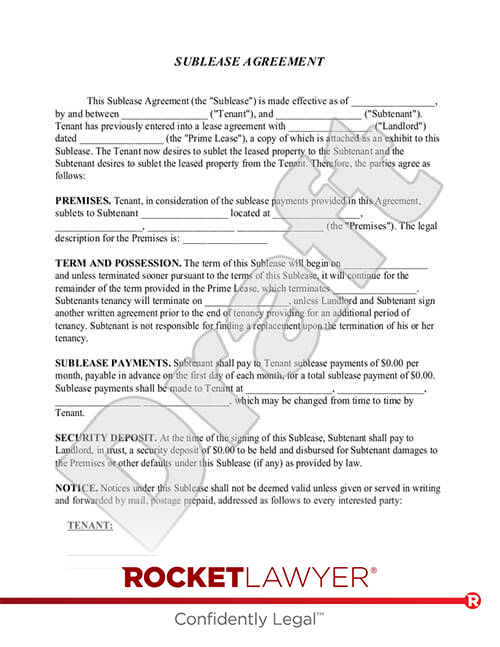Assignment of Lease
When a tenant decides to assign a lease, he is essentially giving up all his rights and responsibilities to the rental agreement and the unit to a third-party assignee. As a result, the original tenant (the "assignor") will have to vacate the unit and allow the new tenant to take over all of the leased premises.
However, please note that under the terms of most lease agreements, the original tenant will remain responsible for the terms of the lease. This is important if the new tenant defaults on the lease agreement or causes damage to the property. (Do keep in mind that, sometimes, a landlord may in fact release the original tenant from liability under an assignment of lease). If you're considering a lease assigment, it can be a smart idea to pursue permanent assignment so you won't be on the hook for expenses or damages.
Sublease
When a tenant gives another person the right to occupy a portion or the entire rental unit for a specific period of time, he is, in effect, subletting his rental unit. Under the Residential Tenancies Act, generally, all tenants have the right to sublet their rental unit, subject to the consent of the landlord. Although the law provides that the landlord cannot be unreasonable or arbitrary in withholding consent to a sublease, you still need to get your landlord's written consent to sublease the property before letting somebody else in.
Subletting a rental unit can be a more involved process when compared to assigning a lease since it requires the completion of a sublease agreement between the original tenant (the "sublessor") and the secondary tenant (the "sublessee"). The original tenant retains all his rights and responsibilities in the leased unit so he remains liable for the monthly rent and the condition of the rental property.
This article contains general legal information and does not contain legal advice. Rocket Lawyer is not a law firm or a substitute for an attorney or law firm. The law is complex and changes often. For legal advice, please ask a lawyer.
